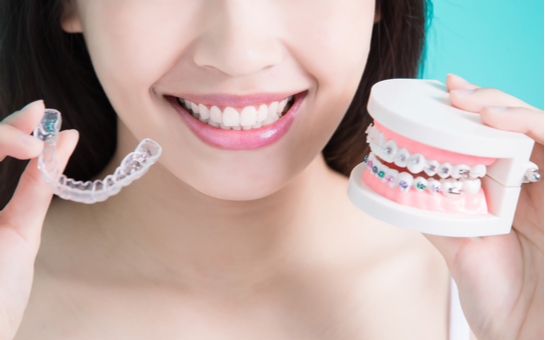
When looking after your kid’s teeth, it’s important to know the best options possible. Not only which are going to be the most effective but also which are most comfortable and affordable.
There are now a growing number of options when people are considering getting braces. Years ago, there was no such thing as Invisalign but now it may be the newest and smartest option for your children’s teeth.
If you’re looking into the options, Gold Coast Invisalign providers can be found to help. Firstly though, let’s differentiate the differences between the two.
BRACES VS INVISALIGN
Both of the above came into existence to align the teeth for a straighter smile whilst boosting oral health. Braces have been around for a while but Invisalign didn’t hit the market till 2000 so are still more niche and lesser known than their competition.
Braces
Braces are comprised of small metal brackets that get stuck to each individual tooth. They are then tied together by wires and small bands which then get tightened bit by bit to encourage the teeth to move and straighten over time. These days you can get brackets to suit the colour of the teeth so that they blend better. However, some kids love the bright assortment of colours which allow them to personalise their braces.
Invisalign
Completely clear, these are designed to be unseen and practically undetectable. They are basically plastic aligner trays (BPA-free) placed over the teeth to gently move them into place. X-rays are used by the orthodontist to create the perfect fit which slots neatly into the mouth and creates enough room for movement. This is a great option for kids worried about the aesthetic aspect and maybe the stigma that often gets attached to traditional braces.
You may be wondering however, apart from their obvious aesthetic differences, which ones are most effective?
THE MOST EFFECTIVE OPTION
Both are designed to correct and manipulate crowded or crooked teeth to help with misalignment. Traditional braces include brackets placed on the teeth with cement attached to wires. Wires and elastic bands are placed around the brackets and adjusted roughly every 3-10 weeks. There’s usually pain and a tight feeling when this happens.
The duration the brace is worn ranges anywhere between 6 months to as much as 2 years or more. Afterwards, the orthodontist may suggest a clear retainer be worn at night to keep the teeth in place shortly after the braces are removed.
Invisalign on the other hand, accomplishes the same things such as overcrowding, overbite, wide spaces but with a clear plastic tray. It’s a removable option that slides over the teeth and should be taken out whenever someone eats, drinks or brushes their teeth.
However, they should be worn at least 20 hours every day. Whilst these are a good option for a lot of children, they cannot correct more serious orthodontic issues.
Next steps…
To look more into your options locally, there are plenty Invisalign providers out there who will help and who will be able to advise you on the best option. This is why it’s best to visit your dental specialist so they can make a custom recommendation for which option would be most effective. Everyone has specific needs and so whilst the Invisalign may suit some, it may not suit others.
